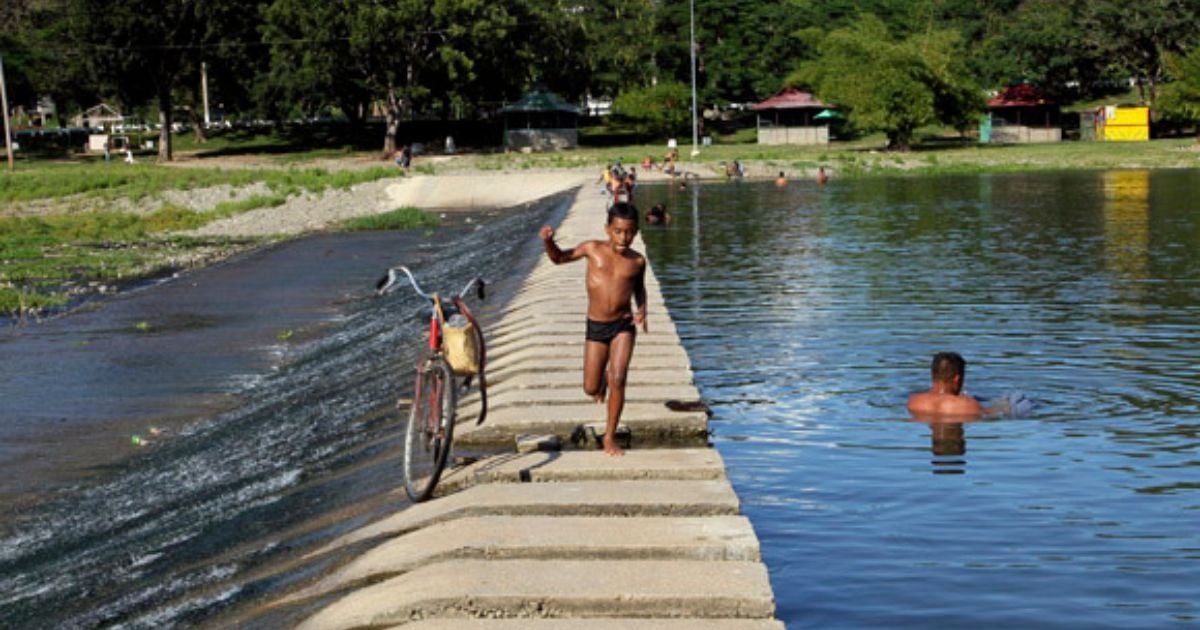The tragic death of a teenage girl in a reservoir in Santiago de Cuba has prompted rescuer Aris Arias Batalla to underscore the critical dangers of swimming in unauthorized areas. He has shared essential safety tips to prevent fatal accidents as the summer season approaches. As the provincial head of Operations and Aquatic Safety, Arias expressed his sorrow on Facebook over the loss of the young girl, who had celebrated her 16th birthday just days before the incident. "My condolences to the family, friends, and acquaintances. This is not the first time I've addressed this issue," Arias wrote, visibly shaken by the event.
He recalled his previous tours across the region where he had urged local authorities to strengthen bans on public swimming in hazardous areas like reservoirs, dams, and unsupervised locations. Arias emphasized that these measures are not arbitrary but are safety protocols put in place to safeguard human lives.
Hidden Dangers Beneath Calm Waters
Arias explained that reservoirs are not designed for human recreation. While their waters may appear calm, they conceal dangerous currents, whirlpools, and sudden water level changes caused by technical operations. Additionally, the bottom of these structures is often unstable and can include silt, rocks, debris, or submerged structures that are invisible from the surface, posing risks of entrapment or severe injury.
Another peril, less visible but equally deadly, is the water temperature in deep areas. Sudden thermal changes can cause a body shock, rendering a person unable to react. Moreover, reservoirs supply drinking water to nearby communities, and any contamination poses a public health issue.
Risks of Diving in Unknown Waters
On Sunday, Arias also reminded the public about the hazards of diving headfirst into rivers, dams, beaches, and pools, especially when the depth is unknown. Such actions often lead to severe spinal injuries, leaving lasting damage like paralysis or even death. Though these tragedies might seem rare, the rescuer warned they occur more frequently than expected, particularly during summer months and among young individuals.
The lack of visibility of the bottom, hidden obstacles, or a misjudgment of depth can turn a fun moment into an irreversible tragedy. The advice is straightforward: ensure the area is safe before entering the water, avoid jumping from makeshift structures or from great heights, and when in doubt, refrain from diving. "Jumping into water without knowing the terrain is a reckless act that can cost lives," Arias stressed.
Emergency Response in Case of Accidents
If an accident occurs, Arias advised against moving the injured person abruptly; the priority should be to gently remove them from the water, place them on a stable surface, and immobilize their head and neck. It is also crucial to check for breathing, and if absent, attempt to clear the airways before immediately contacting emergency services—104 for SIUM or 105 for Firefighters—and follow their instructions precisely.
The specialist also warned that transporting an injured person via private means could worsen their condition. Despite acknowledging the current challenges of the ambulance system in Cuba, he insisted on prioritizing a safe evacuation with minimal movement. "Every safety rule observed is a life protected," Arias concluded in his message.
Safety and Risk Management in Cuban Reservoirs
What are the main dangers of swimming in reservoirs?
The primary dangers include hidden currents, sudden water level changes, unstable bottoms with debris, and potential temperature shocks in deeper areas. These factors can lead to entrapment, injury, or even death.
Why are reservoirs not safe for recreational swimming?
Reservoirs are engineered for water management, not recreation. Their tranquil appearance can be misleading, as they hide risks such as strong currents and sudden water level changes that pose significant threats to swimmers.
How should one respond if an accident occurs in the water?
Gently remove the person from the water, immobilize their head and neck, check for breathing, and if necessary, clear the airways. Contact emergency services immediately and follow their guidance.
